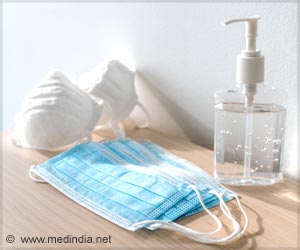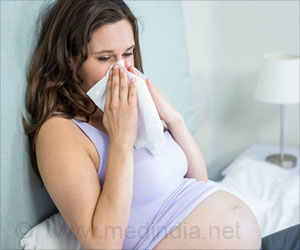Avoid using filters such as a HEPA/MERV or vacuum bags unless they are certified to be fiberglass-free since often such filters on their own may release glass fibers that can be inhaled. Other materials to avoid for masks include loose-knitted material, batting fabric, felt, fleece, or shiny, reusable shopping bags.

‘Avoid using filters such as a HEPA/MERV or vacuum bags unless they are certified to be fiberglass-free since often such filters on their own may release glass fibers that can be inhaled. Other materials to avoid for masks include loose-knitted material, batting fabric, felt, fleece, or shiny, reusable shopping bags.’





"A submicron particle can stay in the air for hours and days, depending on the ventilation, so if you have a room that is not ventilated or poorly ventilated then these small particles can stay there for a very long period of time," said Nga Lee (Sally) Ng, associate professor and Tanner Faculty Fellow in the School of Chemical and Biomolecular Engineering and the School of Earth and Atmospheric Sciences.The study was conducted during spring 2020, when the pandemic triggered a global shutdown of most institutions. Communities faced massive shortages of personal protective equipment, prompting many people to make their own homemade masks. Georgia Tech quickly set up the study since it already had "a great system for testing filtration efficiency using existing instruments in the lab," Ng recalled.
The study's findings were used to shape homemade face mask recommendations here last April, with the comprehensive study findings published in the journal Aerosol Science and Technology.
In all, the researchers tested 33 different commercially accessible materials not limited to cloth fabrics, including single-layer woven fabrics such as cotton and woven polyester, blended fabrics, nonwoven materials, cellulose-based materials, materials commonly found and used in hospitals, and various filter materials.
"We learned there was a lot of variability in filtration performance even in the same type of material," Ng said.
Advertisement
The best-performing materials for homemade masks were blackout drapery and sterilization wrap widely used for packing surgical instruments. Both materials are commercially available.
Advertisement
Multilayered samples performed much better than single-layer samples, but people should pay attention to breathability. The two-layered and three-layered samples tested show an overall filtration efficiency of about 50% for submicron particles. Mask fit is also important since particles can easily escape through gaps at the nose or through the sides of the mask.
The analysis showed that properly fitted and multilayer masks reject 84% of particles expelled by a person when one person wears it. Two people donning these types of masks reduces particle transmission by 96%.
A final takeaway of the research was the importance of universal mask wearing.
"The best way to protect ourselves and others is to reduce exhaled particles at the source, and the source is our face," Ng said, adding, "That really gets amplified when everyone starts wearing masks."
She expressed optimism that the findings will motivate people to more widely embrace mask wearing if they are sick and need to be in public.
"Not everyone understands the importance of airborne virus transmission, and the importance of wearing a mask," she said. "I hope that the practice will continue to help reduce the release of these viral particles into the environment and help protect others."
Source-Eurekalert















